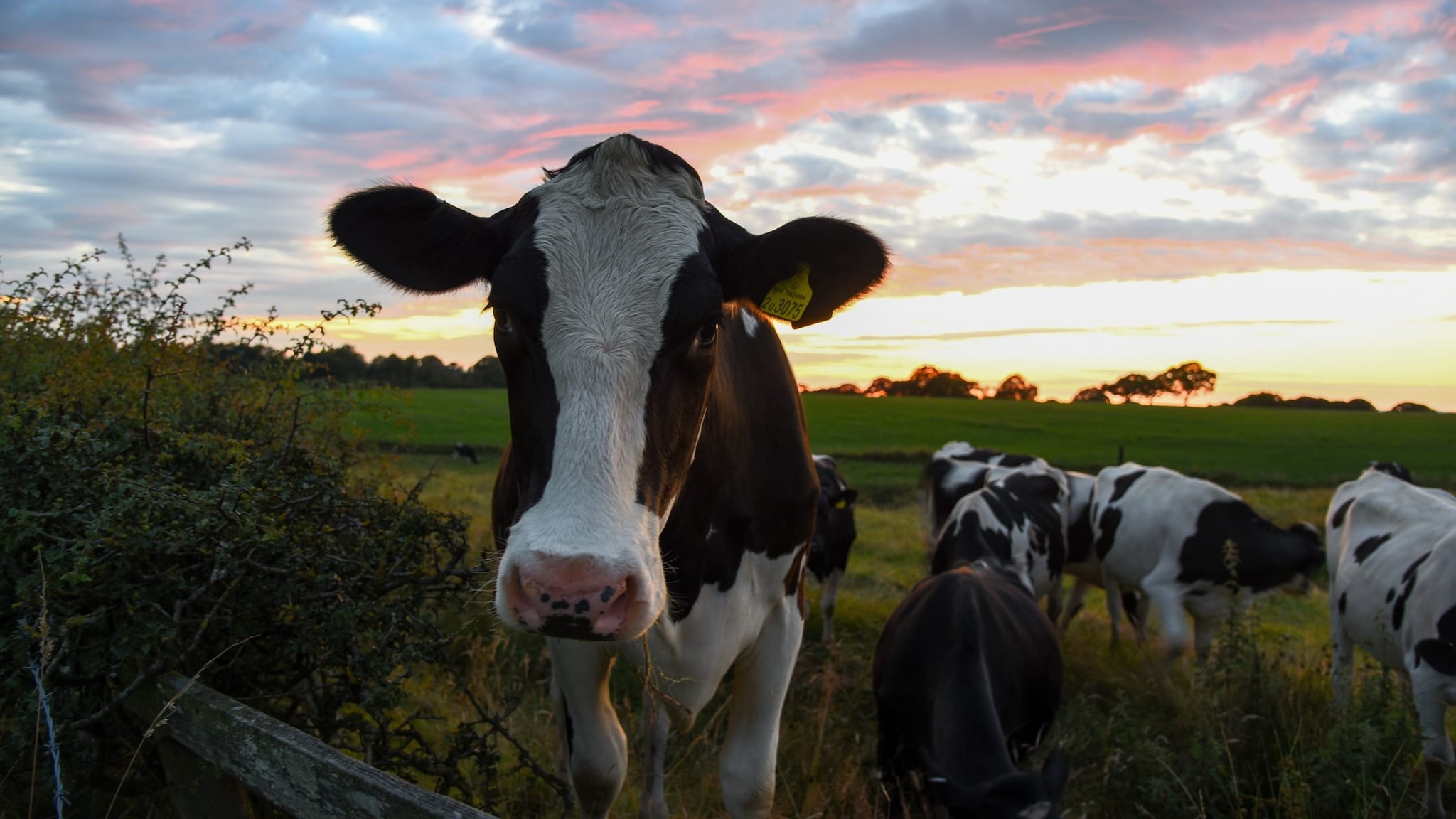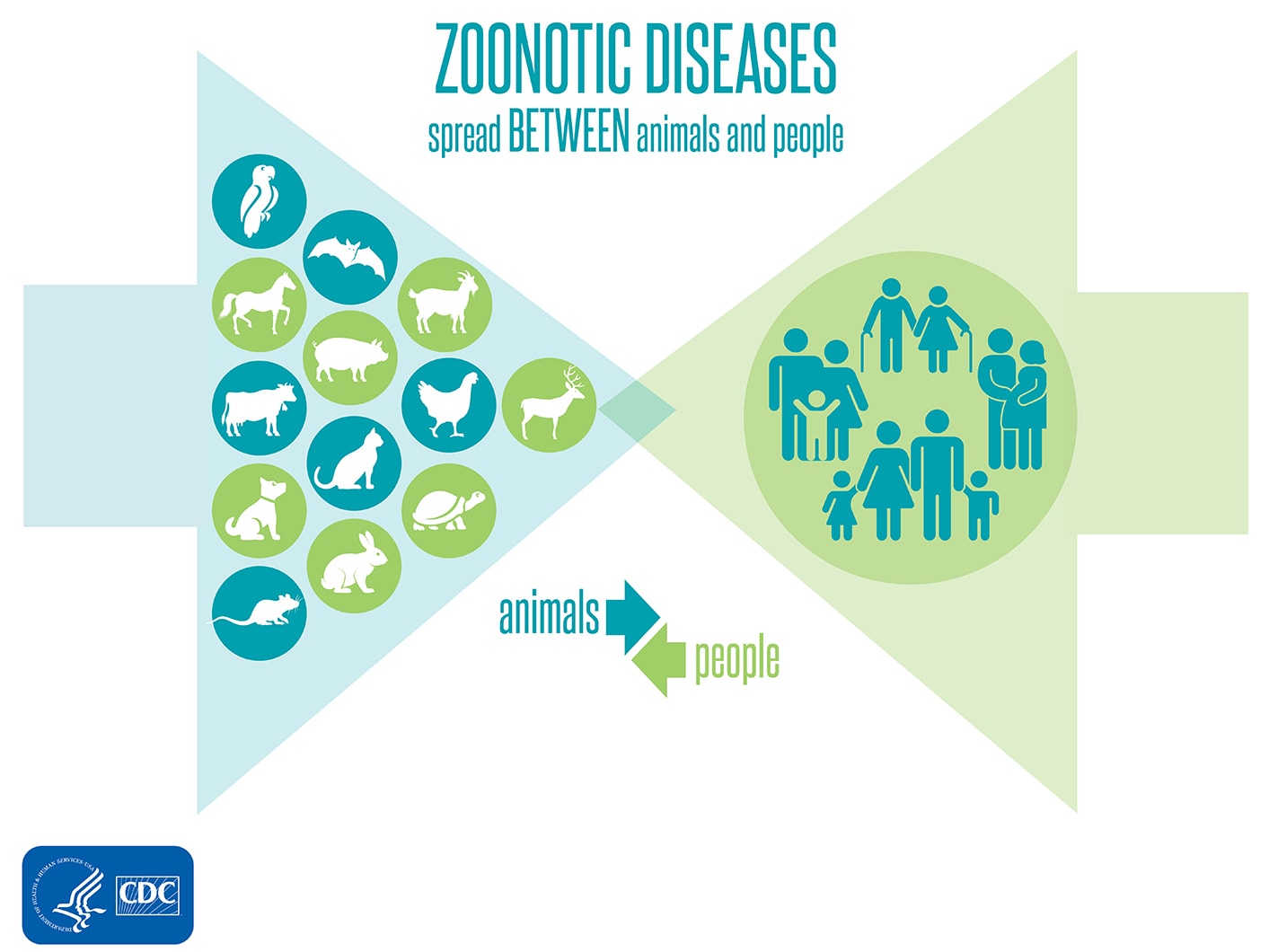Key points
- Zoonotic diseases are infections that spread between animals and people.
- People can become infected with these diseases by interacting with animals.
- People in rural areas are often in contact with more animals than people in urban areas. The resources below can help people understand and prevent infection from zoonotic diseases.

Overview
Animals are an important part of our lives – some animals are an important source of food and fiber, while other animals offer companionship.
Zoonotic diseases are infections that spread between animals and people. They can be caused by bacteria, viruses, parasites, and fungi. Zoonotic diseases can cause illnesses that range from minor skin infections like ringworm to deadly illnesses like rabies and anthrax.
People can get these diseases by touching animals or an animal's saliva, blood, urine, feces, or other body fluids; animal bites and scratches; or contact with contaminated objects in areas where animals live and roam, such as habitats, supplies, and animal food. People can also get zoonotic diseases by drinking water or eating food contaminated by animals, such as raw fruits and vegetables that have come in contact with animal feces.
Zoonotic diseases are common in people.

Why It's Important
People in rural areas are often in close proximity to animals, whether livestock, pets, or wildlife. Although zoonotic diseases are of concern for all Americans, they are of particular concern for farm workers, especially those working with livestock.
But contact with animals is not limited to those living or working on farms. People may come in contact with livestock at fairgrounds, petting zoos, or while visiting a farm. Nearly 150 million people visit agricultural fairs in the United States each year, and outbreaks linked to petting zoos and other animal encounters are common.
People in rural areas may come in contact with wildlife while hunting, hiking, or during other outdoor activities, and wildlife may also wander into yards or near homes. In addition to zoonotic diseases, people in rural areas are at risk for tickborne diseases like Lyme disease, and other diseases spread by fleas, mosquitoes, and other vectors.
Young children, older adults, and people with weakened immune systems are most at risk for serious illness from zoonotic diseases. Clinicians in rural communities should keep zoonotic diseases in mind when seeing patients and encourage easy ways to prevent the spread of infections, including handwashing after contact with animals, their habitats, supplies, or food.
Resources and tools
- Zoonotic Diseases - Information from CDC's One Health Office on zoonotic diseases.
- CDC Partnership on Influenza and Zoonoses Education among Youth in Agriculture - Information on CDC partnerships for youth in agricultural programs.
- Zoonoses and One Health Updates (ZOHU) Call - Monthly webinars offering free Continuing Education on zoonotic diseases and One Health topics.
- Healthy Pets, Healthy People - CDC's website provides useful information on staying healthy around pets, farm animals, and wildlife.
- Animal Lovers and Zoonotic Diseases: 5 Things to Know - CDC Expert Commentary on Medscape.
- Animal Contact Compendium - Guidance for public health officials, veterinarians, animal exhibitors, and others on preventing zoonotic diseases.
- Animal Exhibit Visitors & Managers - Information for preventing spread of disease at animal exhibits.
